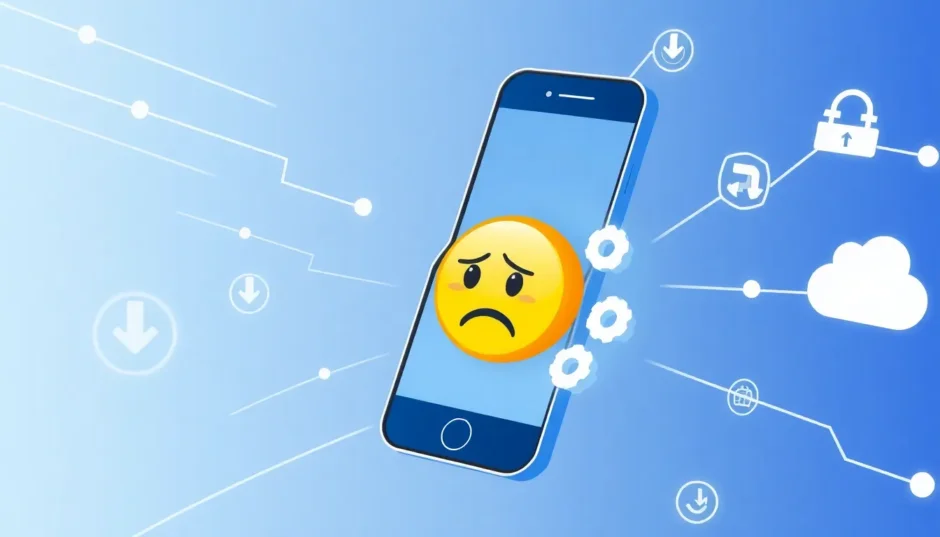If you’ve ever tried to update your iPhone only to find it stuck on the “update requested” screen, you know how frustrating that can be. That little message just sits there, and nothing seems to happen no matter how long you wait. You’re not alone – many iPhone users encounter this exact situation when requesting update iPhone to the latest iOS version.
The good news is that this problem is usually fixable with some straightforward troubleshooting steps. In this comprehensive guide, we’ll explore what causes your iPhone to get stuck during the update process and walk through multiple solutions to get your device updating properly again.
What Does “Update Requested” Mean on Your iPhone?
When you tap “Download and Install” for an iOS update, your device communicates with Apple’s servers to begin the process. The “update requested” status indicates that your iPhone has successfully contacted Apple and is waiting for authorization to download the update files. This is the initial phase of what’s known as an OTA (over-the-air) update.
Normally, this stage lasts just a few moments before progressing to downloading the update. However, when your iPhone gets stuck here, it suggests something is preventing the process from moving forward. Understanding what might be causing the delay is the first step toward resolving the issue.
Several factors can contribute to your iPhone update requested status persisting longer than it should. Let’s examine the most common culprits:
Common Reasons for iPhone Update Requested Getting Stuck
- Unstable internet connection: A weak Wi-Fi signal or intermittent connectivity can disrupt communication with Apple’s update servers
- Overloaded Apple servers: When many users are trying to update simultaneously (like after a major iOS release), Apple’s servers may struggle to handle all the requests
- Insufficient battery power: Your iPhone requires adequate charge to safely complete an update, and low battery levels can pause the process
- Limited storage space: iOS updates need significant free space to download and install properly
- Software conflicts: Sometimes background processes or minor system glitches interfere with the update mechanism
- Network configuration issues: Incorrect network settings or VPN configurations can block access to update servers
Basic Troubleshooting for iPhone Stuck on Update Requested
Before attempting more advanced solutions, it’s wise to check these basic factors that commonly cause update delays. These simple checks resolve many cases of iPhone stuck on update requested without requiring technical expertise.
Check Your iPhone’s Battery Level
Your iPhone needs sufficient power to complete an update safely. If the battery is too low, the system may intentionally pause the update process to prevent unexpected shutdowns during installation.
Make sure your iPhone is charged to at least 50% before attempting an update. If possible, keep it connected to power throughout the update process. This ensures that even if the update takes longer than expected, your device won’t run out of battery mid-installation.
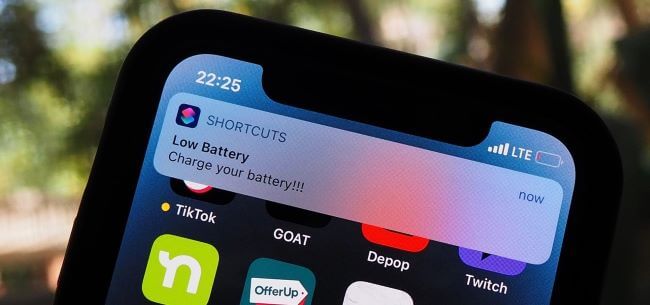
Verify Your Wi-Fi Connection
A stable internet connection is crucial for downloading iOS updates. If your Wi-Fi signal is weak or unstable, your iPhone may struggle to communicate with Apple’s servers, resulting in the update requested status persisting indefinitely.
Check that you’re connected to a reliable Wi-Fi network with strong signal strength. If possible, try moving closer to your router or temporarily disconnecting other devices that might be consuming bandwidth. You might also try switching to a different Wi-Fi network to see if that resolves the issue.
Ensure Sufficient Storage Space
iOS updates require significant free space to download and install. The exact amount varies depending on the update size – minor updates might need 1-2GB, while major iOS releases can require 5-8GB or more of available storage.
Check your available storage by going to Settings > General > iPhone Storage. If space is limited, consider removing unused apps, old messages, or other files to free up room for the update. Many users find that simply clearing some space resolves their iPhone update requested problem.
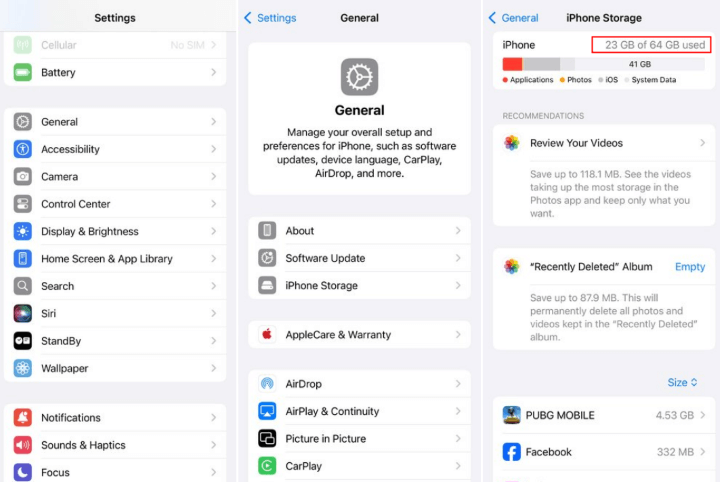
Advanced Solutions for iPhone Stuck on Update Requested
If the basic checks don’t resolve the issue, it’s time to try more advanced troubleshooting methods. These solutions address potential software conflicts and system glitches that might be preventing your update from proceeding.
Perform a Force Restart
A force restart can resolve many temporary software issues by clearing system caches and refreshing background processes. This simple procedure doesn’t erase any data but can often kickstart a stalled update process.
The method for force restarting varies by iPhone model:
For iPhone 6 or earlier models:Press and hold both the Home button and the Power button simultaneously until the screen goes black and the Apple logo appears.
For iPhone 7/7 Plus models:Press and hold both the Volume Down button and the Power button together until the device restarts and displays the Apple logo.
For iPhone 8/X/11/12/13/14/15/16 models:Quickly press and release the Volume Up button, then quickly press and release the Volume Down button. Finally, press and hold the Power button until the Apple logo appears.

After your iPhone restarts, check if the update process has resumed or if you can attempt the update again.
Reset Network Settings
If your iPhone has a strong Wi-Fi connection but remains stuck on update requested, resetting network settings might help. This clears any potentially problematic network configurations without affecting your personal data.
Go to Settings > General > Transfer or Reset iPhone > Reset > Reset Network Settings. You’ll need to reconnect to your Wi-Fi networks afterward, as this reset removes all saved network information.
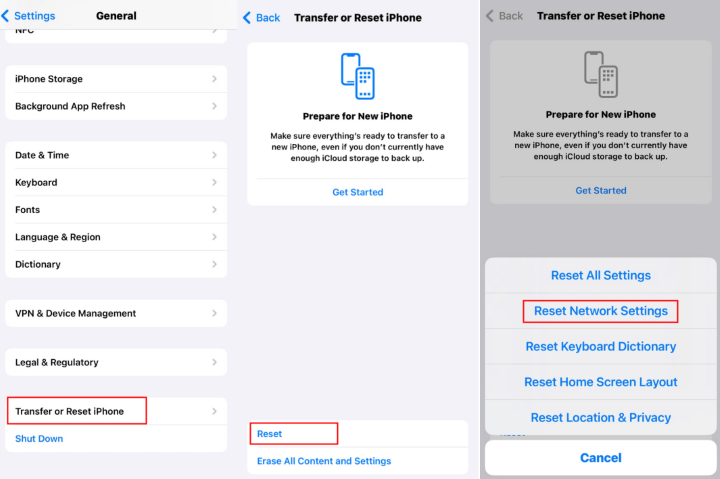
Update Using iTunes or Finder
If the over-the-air update continues to stall, updating through iTunes (on Windows or older macOS) or Finder (on macOS Catalina and later) often resolves the issue. This method downloads the update directly to your computer and then transfers it to your iPhone, bypassing potential Wi-Fi problems.
Step 1: Ensure you have the latest version of iTunes installed, or if you’re using macOS Catalina or later, make sure your Finder is up to date.
Step 2: Connect your iPhone to your computer using a USB cable.
Step 3: If prompted on your iPhone, tap “Trust” and enter your passcode to authorize the connection.
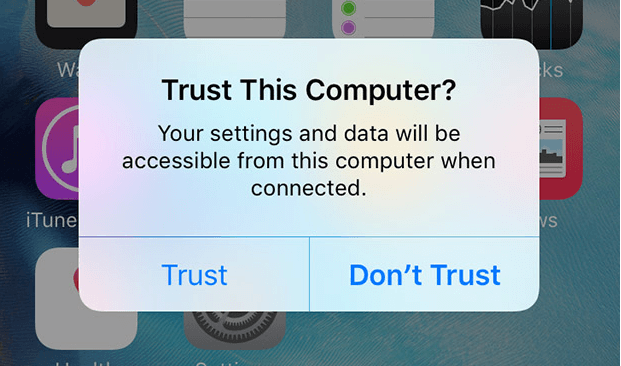
Step 4: Open iTunes or Finder and select your iPhone from the device list.
Step 5: In the Summary tab (iTunes) or General tab (Finder), click “Check for Update.”
Step 6: If an update is available, click “Download and Update” to begin the process.
Step 7: Keep your iPhone connected until the update completes. Your device will restart automatically when finished.
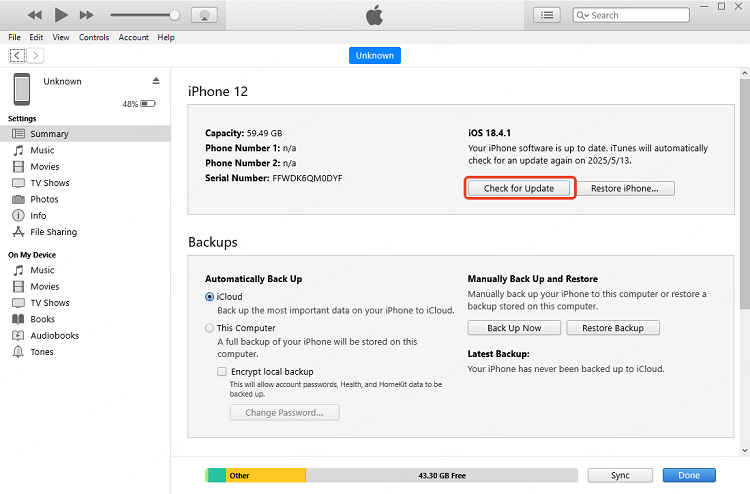
Use iMyFone Fixppo iOS System Repair Tool
When traditional methods fail to resolve the update requested on iPhone issue, specialized repair tools like iMyFone Fixppo offer a powerful solution. This software addresses deeper system-level problems that might be preventing your update from completing.
iMyFone Fixppo.Downgrade iOS 26 to 18 or upgrade to iOS 26, no jailbreak.Repair 150+ iOS/iPadOS/tvOS system issues like stuck on Apple logo, boot loop, black screen without losing data.Free enter/exit Recovery Mode on iPhone and iPad with one-click.Factory reset iPhone/iPad/Apple TV without passcode/iTunes/Finder.Back up and restore iPhone data without iTunes/iCloud.Fix various iOS bugs at home for you to smoothly use your device.Support all iOS versions and devices including iOS 26/18 and iPhone 17.Fixppo only performs system repair with the user’s permission.
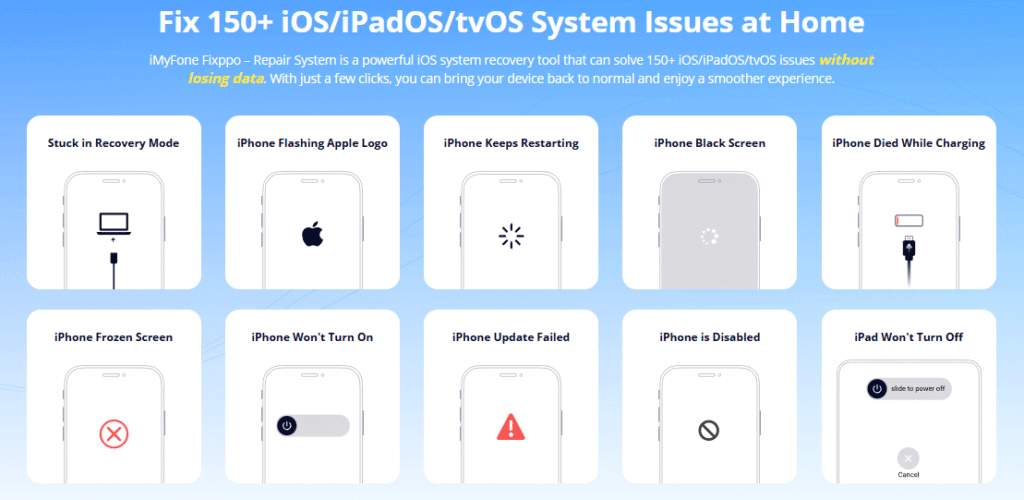
Check More Details | Download Now! | Check All Deals
Key advantages of using iMyFone Fixppo for resolving iOS update issues:
- Data protection: Fixes system issues without erasing your personal data
- Bypasses iTunes limitations: Works when iTunes fails to recognize your device or gets stuck during updates
- Comprehensive device support: Compatible with all iPhone models and iOS versions, including the latest iOS 18/26
- High success rate: Effectively resolves various iOS issues including iPhone stuck on update requested
- Automatic iOS updates: Can update your device to the latest iOS version while fixing the underlying problem
- User-friendly interface: Requires no technical expertise with simple step-by-step instructions
Here’s how to use iMyFone Fixppo to resolve your iPhone update requested problem:
Step 1: Download and install iMyFone Fixppo on your computer, then launch the application and click “Start Repair.”
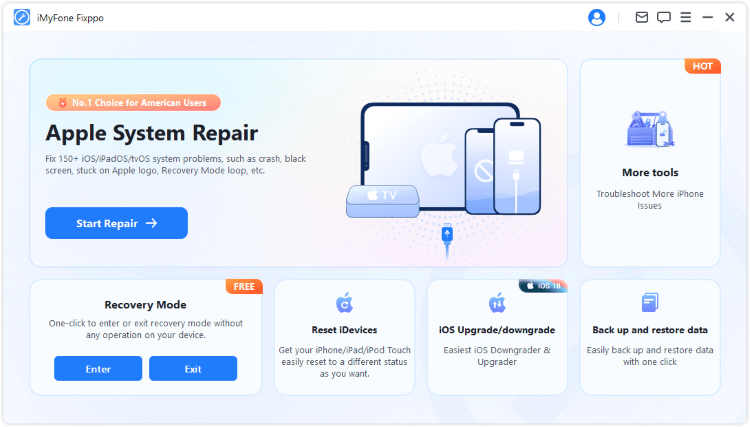
Step 2: Connect your iPhone to the computer using a USB cable and select “Standard Mode” from the options. This mode preserves your data while fixing system issues.
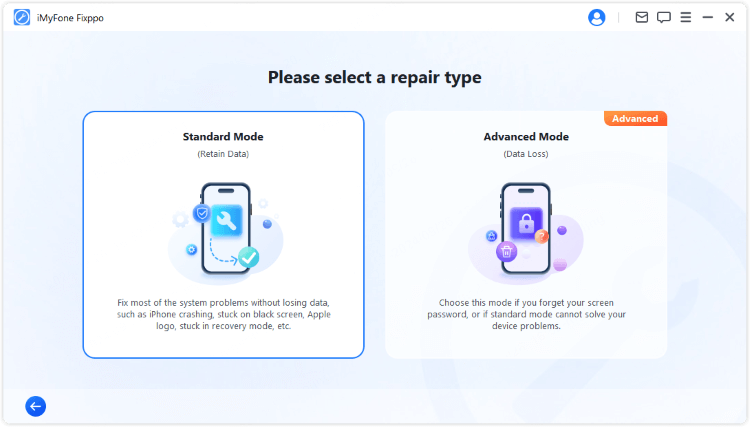
Step 3: The software will automatically detect your connected device. Click the “Download” button to retrieve the appropriate iOS firmware for repairing your system.
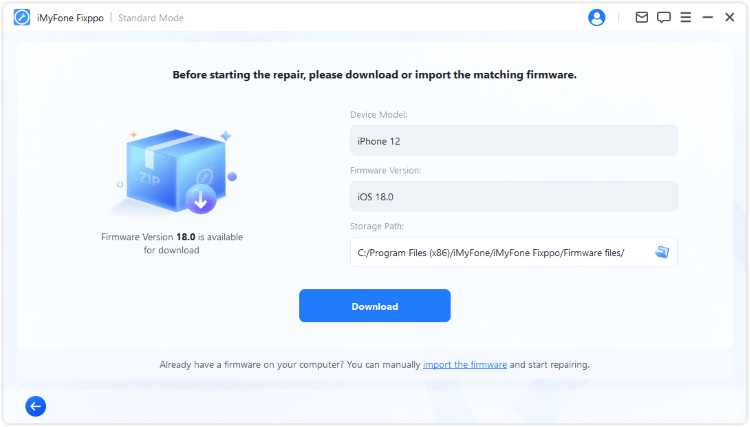
Step 4: Once the firmware download completes, click “Start Standard Repair” to begin the repair process. The software will fix the system issues preventing your update from proceeding.
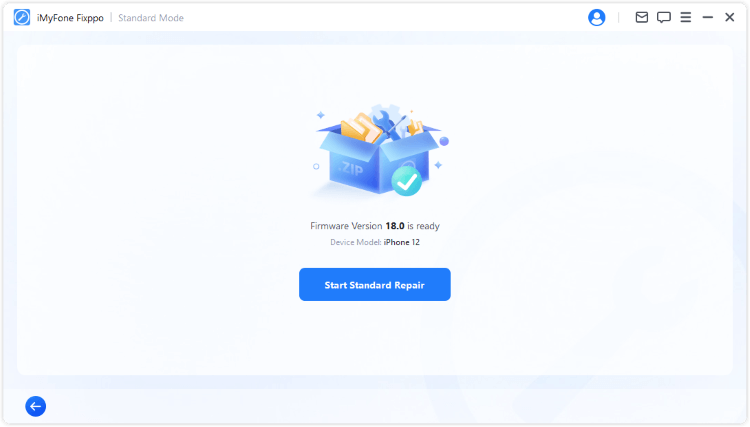
After a few minutes, the repair process will complete, and your iPhone will restart. The update requested error should now be resolved, and your iOS software will be updated to the latest version.
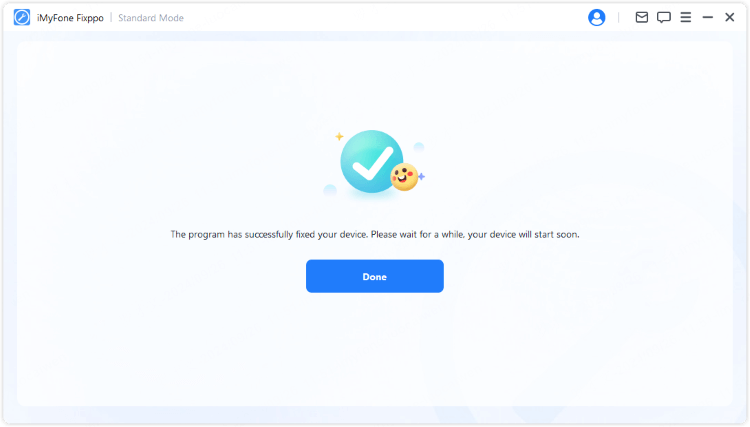
Restore iPhone Using Recovery Mode
If all other methods fail, restoring your iPhone through recovery mode using iTunes or Finder can resolve persistent update issues. Be aware that this method erases all data on your device, so ensure you have a recent backup before proceeding.
Step 1: Connect your iPhone to your computer and open iTunes (or Finder on macOS Catalina and later).
Step 2: Put your iPhone into recovery mode. The method varies by model:
For iPhone 6 or earlier:Press and hold both the Home button and Power button for at least 10 seconds until the “Connect to iTunes” screen appears.
For iPhone 7/7 Plus:Press and hold both the Volume Down button and Power button simultaneously until the recovery mode screen displays.
For iPhone 8/X/11/12/13/14/15/16 models:Quickly press and release the Volume Up button, then quickly press and release the Volume Down button. Finally, press and hold the Power button until the recovery mode screen appears.
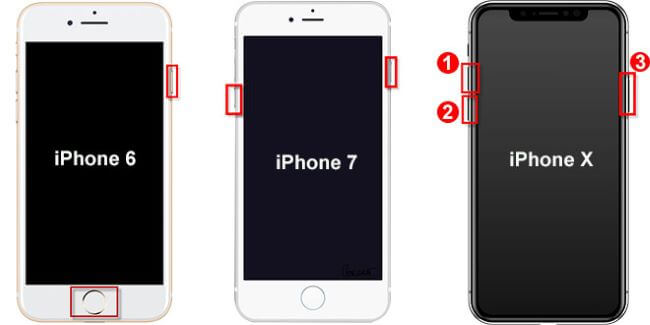
Step 3: When iTunes or Finder detects an iPhone in recovery mode, you’ll see a prompt with options to Restore or Update. Click “Restore” to reinstall iOS and erase all data.
Step 4: The restoration process will download the latest iOS version and install it on your iPhone. This may take some time depending on your internet connection speed.
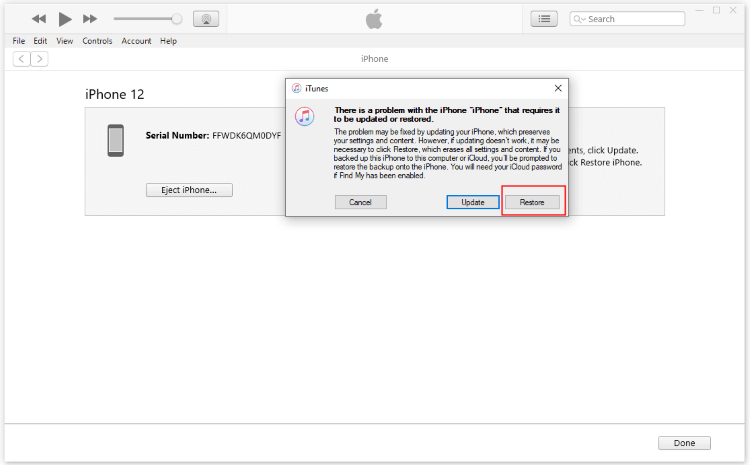
After the process completes, you can restore your data from a backup during the initial setup process.
Preventing Future Update Issues
Once you’ve resolved the immediate problem of your iPhone stuck on update requested, you can take steps to prevent similar issues in the future:
- Maintain adequate storage: Regularly check your available storage and keep at least 10-15GB free for future updates
- Update during off-peak hours: Try updating your iOS early in the morning or late at night when Apple’s servers may be less congested
- Use a reliable Wi-Fi network: Ensure you have a strong, stable internet connection before beginning updates
- Keep your device charged: Connect to power during updates, especially for major iOS releases
- Close background apps: Before updating, close unnecessary apps to free up system resources
- Consider computer-based updates: For major iOS updates, using iTunes or Finder often provides a more reliable experience
When to Seek Professional Help
In most cases, the methods outlined above will resolve the iPhone update requested problem. However, if you’ve tried all these solutions without success, there might be a hardware issue preventing your iPhone from updating properly.
If your iPhone consistently fails to update despite following all troubleshooting steps, consider contacting Apple Support or visiting an Apple Store for further diagnosis. Persistent update failures can occasionally indicate deeper hardware problems that require professional repair.
Conclusion
Dealing with an iPhone stuck on update requested can be frustrating, but as we’ve seen, multiple solutions are available to get your device updating properly again. Start with the basic checks like battery level, Wi-Fi connection, and storage space before moving to more advanced troubleshooting methods.
For the most reliable solution that preserves your data while fixing system issues, iMyFone Fixppo offers a comprehensive approach to resolving iOS update problems. Its user-friendly interface and high success rate make it an excellent choice when you’re dealing with persistent update requested iOS 18 or other version issues.
iMyFone Fixppo.Downgrade iOS 26 to 18 or upgrade to iOS 26, no jailbreak.Repair 150+ iOS/iPadOS/tvOS system issues like stuck on Apple logo, boot loop, black screen without losing data.Free enter/exit Recovery Mode on iPhone and iPad with one-click.Factory reset iPhone/iPad/Apple TV without passcode/iTunes/Finder.Back up and restore iPhone data without iTunes/iCloud.Fix various iOS bugs at home for you to smoothly use your device.Support all iOS versions and devices including iOS 26/18 and iPhone 17.Fixppo only performs system repair with the user’s permission.

Check More Details | Download Now! | Check All Deals
Remember that keeping your iPhone updated is important for security, performance, and access to the latest features. With the right approach, you can overcome the update requested on iPhone hurdle and keep your device running smoothly.
Some images courtesy of iMyFone
 TOOL HUNTER
TOOL HUNTER